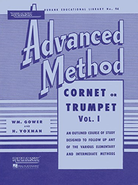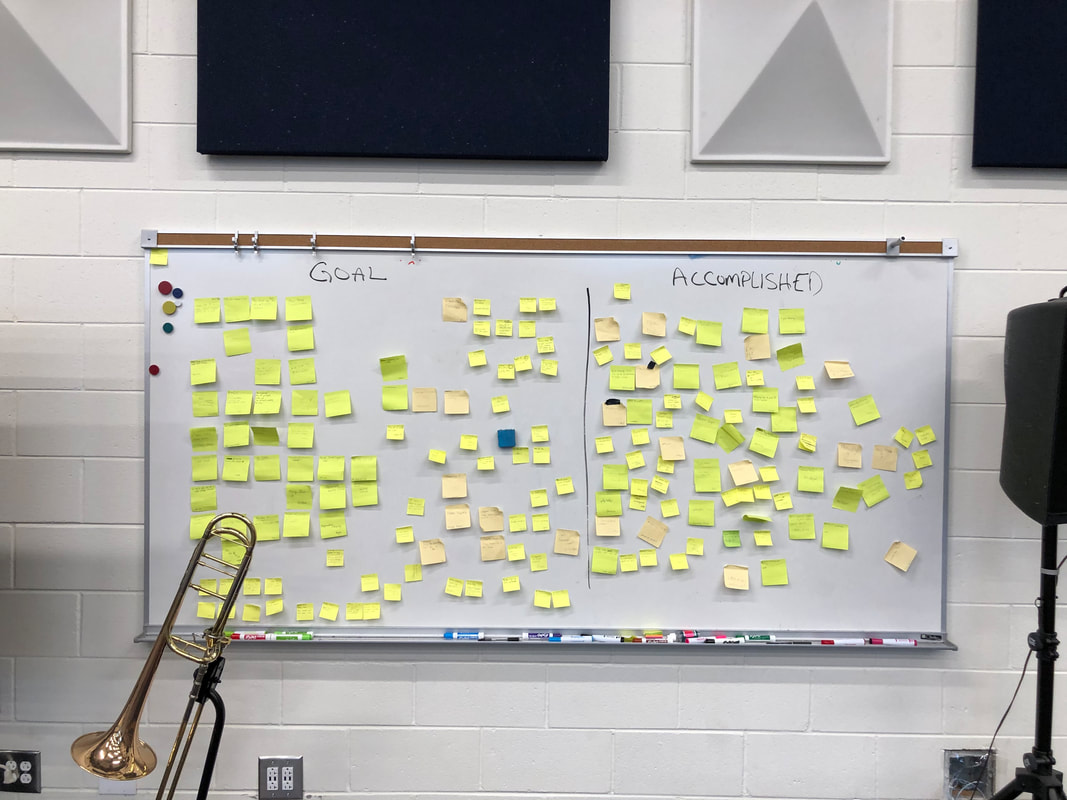|
The Claim Duets are one of the best ways to develop young musicians. (And can be so much fun) My Experience (as a youngster) In my early lessons as a developing trombonist, one of the mainstays was a duet a week. At the time, I didn’t realize it, but it was having a HUGE impact on my playing. In my earliest lessons, I became a great sight-reader because I was always woefully underprepared. As I got older and actually realized the importance of practicing, I developed sight-reading skills AND musicianship. Those weekly duets had a tremendous impact on my playing and have had a huge impact on my ability to create music at a high level today. (i.e. reading and processing music scores and such) As I’ve watched and coached many a young “lessons teacher” over the years, I’ve found that this is one item that is often overlooked. So I think we should change that! The Passing of Knowledge One of the reasons duets are so beneficial is because it’s basically the apprentice mentality. The older, more mature musician is passing on the knowledge to the student. The student has to “play up” to the professional. I don’t think the benefit of this musical pairing can be overstated. **Note: I do think it’s also quite beneficial for two young musicians to practice duets together. This puts all the control (notes, rhythms, timing, tempo, musicality) solely in their hands. If they’ve been trained well, they’ll make music (and enjoy making it!). And hopefully develop a life-long love for making music. ** Some Ideas  If you teach lessons (or have lessons teachers), make sure to play duets! One - Find a great book(s) that progresses gradually and jump in at a developmentally appropriate level. I like the Advanced Method and Selected Duets Voxman / Rubank and the compatible chamber series (and progressive duets) put out by Carl Fisher. I also really like the Festival Ensembles that goes along with Standard of Excellence.. not duets, but still a great intro to chamber music. Two - Work at two different levels.
Three - Set up a duets program within a band/music program. Either match abilities or possibly have older students paired with younger students. Coach the older students on how to help the younger players. Four - Play a recital! Chamber music is so awesome and can give more performance opportunities, even just playing for peers. Closing Thoughts I find myself increasingly on a mission to infuse music into everything.. especially live musicians who can perform out in the community. Duets can help young players to really develop a love for making music. To me, that’s what it’s all about. Getting musicians connected to the music and to MAKING music.
0 Comments
An Idea...
So I had an idea in the summer of 2020.. technically I had lots of idea, most of them didn't come to fruition. Summer 2020 was like no other for all of us. In anticipating instrumentation woes that were sure to come out of Covid, I decided to do my own take on the "flex band" craze. I began just tinkering with Twinkle Twinkle Little Star just to see what I could do. It seemed to work pretty well... my own take on how Mozart wrote some variations for piano, mine were just for young-ish wind musicians.
I LOVE chamber music. I love listening/watching performers and performing it myself. It creates such a unique connection between the musicians themselves, but also between the musicians and audience. So I started writing adaptable quintets to maximize the ability for musicians to have arrangements to play for various settings. The Classics for Everyone
Let's first establish how much I love classical music. Okay good. I am on a mission to bring that love of classical music to the masses in as many ways as possible. One great way is to actually be able to perform and interact directly with the music. *Also, most classical music is in the public domain and free to arrange* So I decided to start finding the pieces, be it piano or orchestra, and started adapting them into accessible quintets for developing musicians. Developed musicians can totally play them as well. I dare say that some audiences might not appreciate the Ewald as much as some good ol' Bach.
I also see this series as a great way to start young musicians on a journey to a deeper listen/study on these pieces. As sad as it is to say, my "alternative/punk rock ears" were first exposed to Copland my freshman year in high school because I joined marching band. Oh how that changed everything for me. Hours and hours and hours of Fanfare for the Common Man and Appalachian Spring. Maybe these chamber pieces can spark a similar interest in someone else (fingers crossed). Let's Talk Performance
So here are some ways I see these tunes working..
To me, the key is being creative in whatever spaces you can fill with music... especially LIVE PEFORMERS. Which gets me to... McAllister rant
I'm ALL ABOUT infusing our communities with music in as many scenarios as possible. Teachers and music enthusiasts should get out in public and PLAY, lest we be replaced by a speaker streaming tunes. There's a huge difference to having actual musicians fill a space. The average person won't really know the difference until they experience it themselves. It's why (classical) music flash mobs are sooo cool. There's an energy to it. A connection to people. I don't think we should ever take for granted the kid that walks by and decides to play trumpet or clarinet or whatever.. just because a group happened to set up shop on the corner and make some music.
If you've read this far, music clearly means a lot to you and we probably have some similar views. I sincerely hope you go out and fill your community with awesome music. Let's keep classical/instrumental/performing alive for generations to come! Adaptable Arrangement Sections
First Thoughts
Today I want to write about one of my initiatives that I've been chipping away at for a while, but is definitely gaining momentum in these days of e-learning. Tracing back to my high school days, I've always found a huge benefit from practicing with an accompaniment track. When I was in high school, Michael Davis (trombonist) came out with the 15-Minute Warm-Up. I acquired this book and started practicing out of it. The best part was the CD that came with the book. I pop that cd in and suddenly, warming up was MUCH more engaging. In addition to the fantastic exercises he had written, I also worked on timing and pitch. I've never forgotten how useful his resources are and still use them today. Check them out here: (https://hip-bonemusic.com)
Take One
Beginning of the Cinematic Series
Using a track to reinforce counting gave me the idea to do other practice tracks. So.. what's something students should play every day, but don't always want to? LONG TONES! So I decided to harmonize (or cinematize??) a long tones sequence, hence "Cinematic Long Tones." See my first two videos exploring this realm:
Then came the idea to create an accompaniment track all aspects of daily playing. I had just gotten the Adobe Creative Suite and was figuring out After Effects, so I decided to make a fun way to practice scales. Because I do the royalty free sync-licensing thing for my music, I also get to see other creatives doing it for artwork, and video templates, and other media. I acquired a multitude of assets and put them together to create "Cinematic Scales," which I've recently updated to reduce the need for PDFs and paper. You can just read it off the screen!
So with the original video, you definitely have to have your scales memorized--which should be the goal! Memorize your scales and you can watch all the fun pictures (that I licensed... definitely didn't make). But to make it more accessible, I created the video with the actual notes. AND an easier one with three note patterns for younger players.
Onward
From here onwards, the goal is to create engaging videos and accompaniment tracks for the full range of development in a concert band setting. From the first notes to advanced concepts, addressing all the dimensions of playing an instrument. Below are more in the Cinematic Series with a little explanation of each. I've got a lot of holes to fill in, but these can definitely get students practicing.
In Closing
Using the practice track when I was a young trombonist helped me tremendously. I hope that these videos can provide similar experiences to the next generations. I love composing for all kinds of mediums, but at heart I'll always be a teacher. With the "Cinematic Series," I'm just glad that I get to mash my worlds together.
I had an idea for a positive way to motivate student achievement. It's nothing complicated, but if implemented well, it could be that extra kick to get some kids going. Here's how the "Wall of Can" (or whatever you want to call it) works:
1) I decided to use sticky notes on one of my boards at the front of the class, though you could really choose anywhere. Divide it into two sections - Can't/Can or Goal/Accomplished, etc. 2) Have the students pick a small, easily accomplished task. It does need to be something they have to practice to be able to do. - I actually chose to do a short term and a long term goal. 3) Once they can do the task, move it over to the other side. You could even have little celebrations when it happens. (students add a new task when they move something to the "can" side) Couple of notes: A) This is a great way to work on self-motivation, teaching the kids about incremental progress. B) Yes, this is similar to pass offs. And you can even do it as pass offs. For me, it's separate. Students get to choose what they're working on. C) You get a great snapshot of what they think they need to work on. D) Students can motivate/help each other. E) Great to walk up to the board at any given moment and say, "Hey Bob, how's that Db scale going!?" Short blog post here. Two words that have consistently made a HUGE difference in the sound of my bands have been "steady air." For whatever reason, the imagery seems to be there for developing musicians, and it has helped to sort out so many tone/sound issues. When making this point, I always go up to the board and draw the above image. I make sure to be extra dramatic when drawing the "not good air" portion. Seems to always get the point across.
|
AuthorThe musings of a composer that also band directs!! ... or maybe it's the other way around.. Archives
May 2021
Categories |
John McAllisterComposer, Educator
- Start Here
-
Music
- Concert Band - Marches
- Concert Band - B
- Concert Band - VE
- Concert Band - E
- Concert Band - ME
- Concert Band - M
- Concert Band - A
- Adaptable Duets
- Adaptable Trios >
- Adaptable Quartets
- Brass Quintet
- Adaptable Quintets >
- Etudes and Exercises
- Marching Band >
- Video Games
- Jazz
- Christmas/Holiday
- 2023 Christmas Music
- Strings
-
Instruments
-
Free Resources
- Bonus Content
- Contact
Follow on Youtube, Instagram, or Facebook
|
Tip Jar? Click below. More coffee. More free stuff.
|




 RSS Feed
RSS Feed
